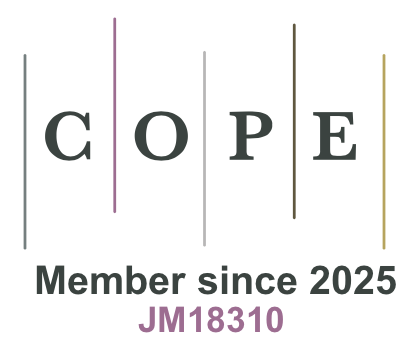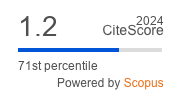Вплив стресу на мовлення дітей в умовах війни
DOI:
https://doi.org/10.29038/eejpl.2022.9.2.labКлючові слова:
посттравматичний стресовий розлад, мовлення, вербалізація, страх, нав’язливий стан, збіднення мовлення, когнітивна апатія, вербальна агресіяАнотація
Війна є непередбаченим та непосильним тягарем для людської психіки. Загроза існуванню, страх за життя, втрата близьких призводять до росту числа непсихотичних межових розладів в тому числі і до посттравматичних стресових розладів. Найнезахищенішою та вразливою частиною населення, що є відкритою для психотравматичного досвіду, є діти. Перебуваючи у зоні військового конфлікту, вони набувають трагічного досвіду, який деформує їхню свідомість, цінності та світогляд. У дітей спостерігаються перепади настрою, депресія, немотивована агресія, нав'язливі стани, непереборний страх і очікування повтору пережитих подій. Стаття присвячена аналізу особливостей мовлення дітей, які стали свідками російсько-української війни, що розпочалася 24 лютого 2022 року. Дослідження зосереджується на описі вербалізації психологічного стану дитини - свідка бомбардувань та обстрілів, дітей із окупованих територій, які мусили виїхати із рідних міст та сіл та дітей, які не бувши прямими свідками воєнних дій, змушені уже півроку жити у таборах для біженців, не маючи змоги повернутися на батьківщину. Розглядаються способи вербалізації страху, тривоги, нав'язливих станів. Аналізуються види вербальної агресії. Також автори вивчають вплив батьків на подолання або ж навпаки підсилення дитячого стресу.
Завантажити
Посилання
Aziz, A., Vostanis, P. (1999). Post‐traumatic Stress Reactions in Children of War. Journal of Child Psychology and Psychiatry, 40(3), 385-391. https://doi.org/10.1111/1469-7610.00456
Buss, A. H., Durkee, A. (1957). An inventory for assessing different kinds of hostility. Journal of Consulting Psychology, 21(4), 343-349. https://doi.org/10.1037/h0046900
Dimitry, L. (2012). A systematic review on the mental health of children and adolescents in areas of armed conflict in the Middle East. Child: Care, Health and Development, 38(2), 153-161. https://doi.org/10.1111/j.1365-2214.2011.01246.x
Drury, J., Williams, R. (2012). Children and young people who are refugees, internally displaced persons or survivors or perpetrators of war, mass violence and terrorism. Current Opinion in Psychiatry, 25(4), 277-284. https://doi.org/10.1097/YCO.0b013e328353eea6
Dymond, S, Dunsmoor, JE, Vervliet, B, Roche, B, Hermans, D. (2015). Fear Generalization in Humans: Systematic Review and Implications for Anxiety Disorder Research. Behavior Therapy, 46(5), 561-582. https://doi.org/10.1016/j.beth.2014.10.001
Herbert, M. (2006) Posttraumatic stress disorder in children. Leicester: British Psychological Society.
Hill, D.C., Moss, R.H., Sykes-Muskett, B., Conner, M., O'Connor, D.B. (2018). Stress and eating behaviors in children and adolescents: Systematic review and meta-analysis. Appetite, 123, 14-22. https://doi.org/10.1016/j.appet.2017.11.109
Kappen, M., Hoorelbeke, K., Madhu, N. [et al.]. (2022). Speech as an indicator for psychosocial stress: A network analytic approach. Behavior Research Methods, 54, 910-921 https://doi.org/10.3758/s13428-021-01670-x
Karvasarskyi, B. D. (2004). Klynycheskaia psykholohyia. [Clinical psychology]. S.-Petersburg: Piter, 512-516.
Kheirbek, M. A. Klemenhagen, K.C., A. Sahay A. (2012). Neurogenesis and generalization: a new approach to stratify and treat anxiety disorders. Nature Neuroscience, 15, 1613-1633. https://doi.org/10.1038/nn.3262
Lawrence, E., Barry, R.A., Brock, R.L., Bunde, M., Langer, A., Ro, E., Fazio, E., Mulryan, L., Hunt, S., Madsen, L., Dzankovic, S. (2011). The Relationship Quality Interview: evidence of reliability, convergent and divergent validity, and incremental utility. Psychological Assessment, 23(1), 44-63. https://doi.org/10.1037/a0021096
Liu, М., War and Children. (2017). American Journal of Psychiatry, 12(7), 3-5. https://doi.org/10.1176/appi.ajp-rj.2017.120702
Macksoud, M., Dyregrov, A., Raundalen, M. (1993). Traumatic war experiences and their effects on children. International Handbook of Traumatic Stress Syndromes. Herston: University of Queensland, Australia, 625-633. https://doi.org/10.1007/978-1-4615-2820-3_52
Oxburgh G. (2011). Psychology and interviewing: What direction now in our quest for reliable information? British Journal of Forensic Practice, 13, 135-144. https://doi.org/10.1108/14636641111134378
Pearn, J. Children and war. (2003). Journal of Paediatrics and Child Health, 39, 166-172. https://doi.org/10.1046/j.1440-1754.2003.00124.x
Price, J., Kassam-Adams, N., Alderfer, M. A., Christofferson, J., & Kazak, A. E. (2016). Systematic Review A Reevaluation and Rpdate of the Integrative (Trajectory) Model of Pediatric Medical Traumatic Stress. Journal of Pediatric Psychology, 41(1), 86-97. https://doi.org/10.1093/jpepsy/jsv074
Qouta, S., Punamäki, R-L., Miller, T., [et al]. (2008). Does war beget child aggression? Military violence, gender, age and aggressive behavior in two Palestinian samples. Aggressive behavior, 34(3), 231-244. https://onlinelibrary.wiley.com/doi/10.1002/ab.20236
Saign, P. A., Yasik, A. E., Oberfield, R. A., Halaman-Daris, P. V., Bremner, J. D. (2006). The intellectual performance of traumatized children and adolescents with or without posttraumatic stress disorder. Journal of Abnormal Psychology, 115(2), 332-340. https://doi.org/10.1037/0021-843X.115.2.332
Samara, M., Hammuda, S., Vostanis, P., El-Khodary, B., Al-Dewik, N. (2020). Children’s prolonged exposure to the toxic stress of war trauma in the Middle East. British Medical Journal, 1-6. https://doi.org/10.1136/bmj.m3155
Slone, M., Mann, S. (2016). Effects of War, Terrorism and Armed Conflict on Young Children: A Systematic Review. Child Psychiatry & Human Development, 47, 950–965. https://doi.org/10.1007/s10578-016-0626-7
Strawn, J. R., Lu, L., Peris, T. S., Levine, A., & Walkup, J. T. (2021). Research Review: Pediatric anxiety disorders–what have we learnt in the last 10 years? Journal of Child Psychology and Psychiatry, 62(2), 114-139. https://doi.org/10.1111/jcpp.13262
Tarabryna, N.V. (2001). Praktykum po psykholohyy posttravmatycheskoho stressa. [Practical course on psychology of post-traumatic stress]. S.-Petersburg: Piter, 240-243.
Trickey, D., Siddaway, A.P., Meiser-Stedman, R., Serpell, L., Field, A. (2012). A meta-analysis of risk factors for post-traumatic stress disorder in children and adolescents. Clinical Psychology Review, 32(2), 122-138. https://doi.org/10.1016/j.cpr.2011.12.001
Yule, W. & Smith, P. (2015). Post traumatic stress disorder. In A. Thapar, D. S. Pine, J. F. Leckman, S. Scott, M. J. Snowling, & E. Taylor, (Eds.). Rutter's Child and Adolescent Psychiatry. (pp. 392-406). Oxford: Blackwell. https://doi.org/10.1002/9781118381953.ch59
Завантаження
Опубліковано
Номер
Розділ
Ліцензія
Авторське право (c) 2022 Antonina Skrypnyk, Olha Labenko

Ця робота ліцензується відповідно до ліцензії Creative Commons Attribution 4.0 International License.












 Creative Commons «Attribution» 4.0
Creative Commons «Attribution» 4.0